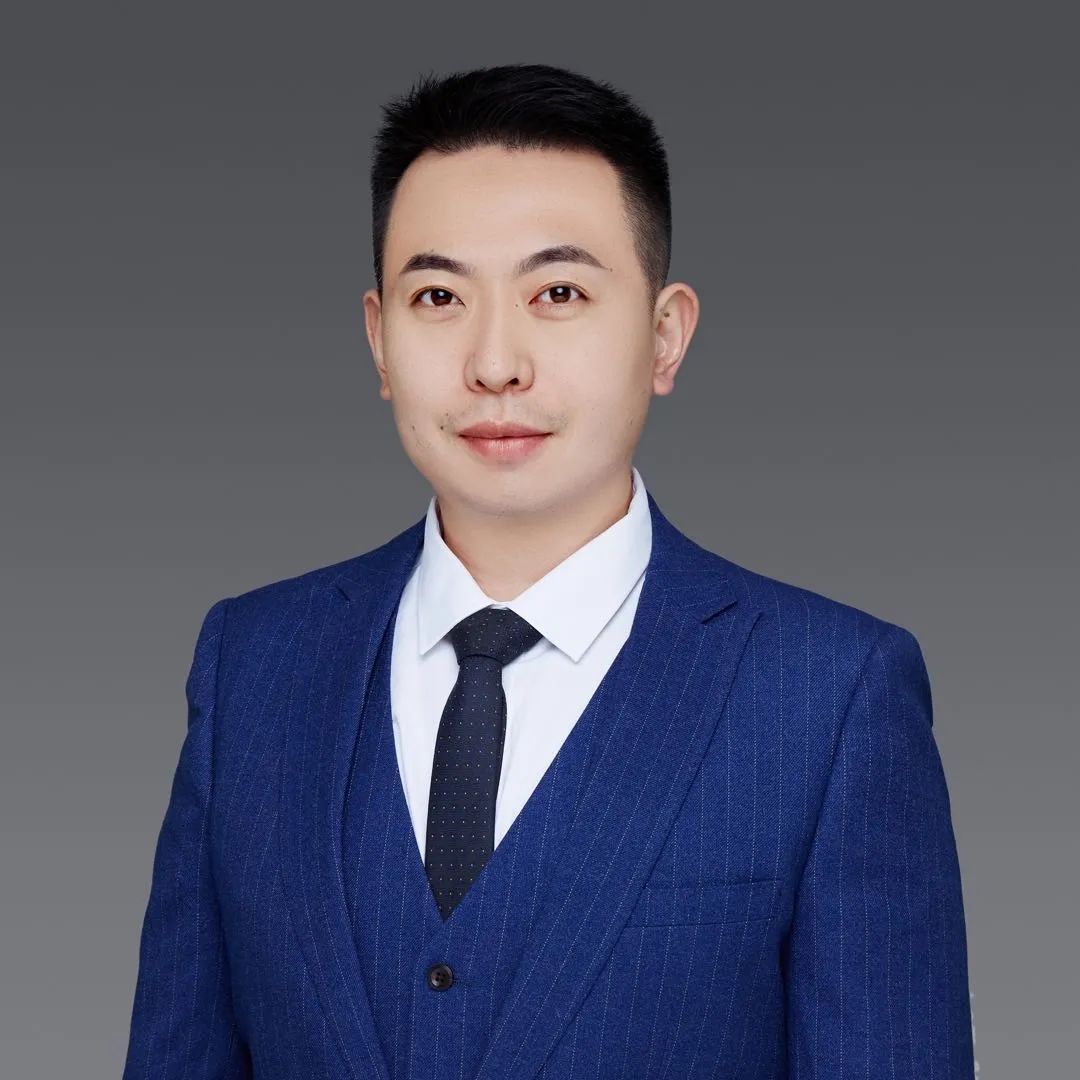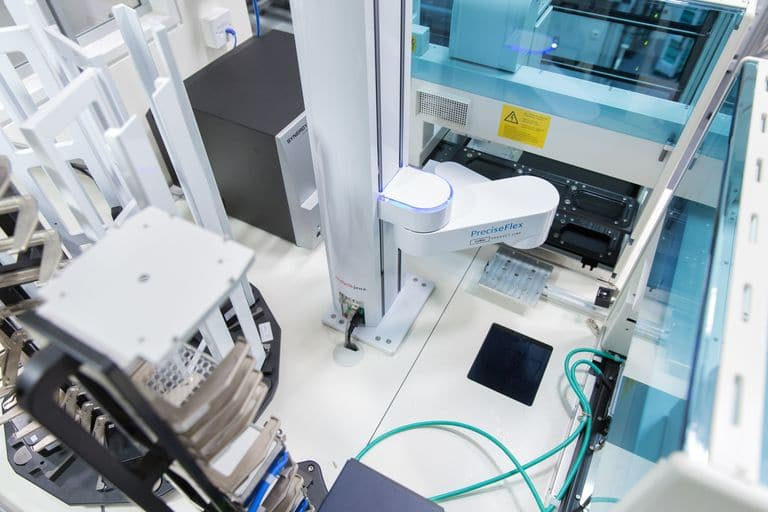
For many who have experienced laboratory work, there have surely been moments of frustration when an experiment that takes days doesn't yield the desired results, leading to starting from scratch. At such times, one can't help but wish for a robot to handle the repetitive tasks.
This dream is inching closer to reality, as laboratory research automation is trending. Just as factories have automated assembly lines, machines can follow a standardized workflow to perform experimental procedures.
Si Tong, a researcher from the Institute of Synthetic Biology at the Shenzhen Institutes of Advanced Technology, Chinese Academy of Sciences (referred to as “ ISB”), is among the early contributors to the development of automated synthetic biology techniques. He is also the chief engineer of the "Major Scientific Infrastructure for Synthetic Biology Research" in Shenzhen (currently under construction, and referred to as Synthetic Biology Infrastructure).

Picture 丨 Si Tong (Source: Interviewee)
After graduating from Tsinghua University in 2009, Si Tong went on to pursue his PhD in synthetic biology under Professor Zhao Huimin at the University of Illinois at Urbana-Champaign (UIUC). He continued his post-doctoral research at the same university after completing his PhD in 2014.
"After receiving my PhD, I chose to stay at UIUC for two reasons. Firstly, the automatic system had just been established, and secondly, during my PhD, I had made significant progress in constructing synthetic life on a large scale. However, there was still a lack of generalized testing methods, which made me eager to further the studies." Si Tong said to SciPhi-SynBio.
In April 2019, Si Tong officially joined the ISB. His research team focuses on automated synthetic biology technology, such as machine-learning guided protein engineering and targeted genome evolution, with applications in microbial cell factory research and the production of fuels, drugs, and materials.
Let Machines Handle Simple, Repetitive, Large-scale Experiments.
According to Si Tong, currently it is believed that mutations during evolution of life are non-directional. Different phenotypes appear in different environments due to the enrichment of specific genetic mutations in a group over a long period, which is the nature's way of evolution.
This process can be simulated in the lab which is called directed evolution. The inventor of this technique, Professor Frances Arnold, was awarded the 2018 Nobel Prize in Chemistry. The technique involves setting a specific goal, such as the biosynthesis of a compound or targeted cancer cell destruction. Then, large-scale mutants are created, with mutations targeted at specific genes in the genome or amino acids in proteins. Using high-throughput screening methods, mutants that are closer to the desired goal are identified and used as starting points for the next round of directed evolution.
Si Tong explains, "Through iterative processes, one can quickly obtain mutants that meet the target requirements. Furthermore, reverse engineering can be used to decipher the underlying principles of their formation to guide rational design. In essence, it's like a 'brute-force' attack." He also points out that “However, the size of the mutant library becomes vast from proteins to pathways and then to genomes, far exceeding manual operational capacity. How high is the upper limit of "brute-force" attack? How do we compare the throughput and accuracy of different mutants? These are factors that are uncontrollable during manual operations. "

Picture 丨 Automated Instrument (Source: synbiobeta)
"To meet these demands, robots are likely more suitable for handling these simple, repetitive tasks that require large-scale operations. Synthetic biology heavily relies on standardization. While much academic focus has been on the standardization of 'objects' at the functional level, there's been limited research into the standardization of 'processes' at the physical level.” Professor Zhao Huimin's research team at UIUC's Chemical Engineering Department believed that process standardization in synthetic biology was essential.
Thus, driven by the demands, the team decided to establish a brand-new system to address the issue of large-scale operations. “The design concept of automated synthetic biology is similar to the automatic production lines of cars and mobile phones. However, while assembling cars and phones is visible to the naked eye, many biological processes, like DNA assembly, are invisible. Hence, there is a need to develop new synthetic biology techniques more suited for automation,” Si Tong highlighted. Another graduate student from the research team, Chao Ran (now the founder of LifeFoundary), was more focused on system integration, and developing automated software and hardware to make them suitable for synthetic biology experiments.
In 2014, the first prototype of the automated synthetic biology facility was born at UIUC, a model now replicated in labs worldwide.
The synthetic biology infrastructure in Shenzhen is set to be more than 30 times the size of this prototype. Its goal is to establish an industrial research platform of a "cloud lab" for users and a "smart lab" for operators, merging automation, informatization, and biotechnology to offer high-throughput, standardized synthetic biology R&D capabilities catering to academic and industrial needs.
Automation + AI: Transforming "Distant Dreams" into "Within Our Lifetime
The complexity of various large biomolecules within cells can be likened to the vastness of the universe. Traditional biotechnological processes resemble an endless journey of nuclear-powered space exploration. Voyager 1 has been in space for over 40 years. However, the addition of automation and AI technologies is like developing a warp drive, making interstellar travel possible in an instant.
Si Tong explained to SciPhi-SynBio, "For single-point mutations, if a protein has 300 sites and each site has 19 possible mutations, then about 6,000 mutants need to be constructed. If testing one mutant takes half an hour, it would take almost half a year to finish them all. But with automated facilities, we can enhance the efficiency of 'brute-force' attack. If construction and testing time is reduced to 5 seconds, the entire process can be completed in a couple of days. However, when it comes to multi-point mutations in proteins, it can lead to a 'curse of dimensionality'.”
The complexity of life forms is much higher than that of a single protein. The number of mutants from various combinations of biomolecules grows exponentially. Even with the aid of automation technology, machines working tirelessly 24/7, it would still take years to complete the tasks. "Therefore, when the number reaches a certain level, it's impossible to exhaust all possibilities through 'brute-force' attack. That's why we introduced AI technology, using deep learning to find patterns, predict experimental results, and optimize experimental designs without having to test every mutant."

(Source: Wageningen University & Research)
Similar to the recent popular AlphaFold2, we don't need to synthesize proteins in the real world. AI can predict structures very close to real proteins, provided a vast amount of data is fed.
"Tasks that took 10 to 20 years can now be done in a month. And the research paradigm is consistent, which can be applied to personalized demands, thus lowering the entry threshold for synthetic biology," Si Tong added. People in downstream fields or industries don't need to fully master the knowledge of synthetic biology. By simply following standardized procedures, they can obtain bacterial strains that meet the requirements.
Accumulating data for the breakthroughs in basic theory
Si Tong stated that the synthetic biology infrastructure in Shenzhen was unparalleled in terms of both financial investment and scale. Generally speaking, not all facilities needed to be integrated, and not all of them needed to be automated. The design of the company's facilities would also be based on specific needs, equipped with different functions.
"The Shenzhen Synthetic Biology Infrastructure aims to satisfy various needs at different directions and levels of synthetic biology, not just focusing on the cell factory level. Moreover, the infrastructure itself will evolve with the science progress. The future goal is the synthetic biology design and modification for any biological system, whether it's animals or plants, to be completed within this Infrastructure,” Si Tong told SciPhi-SynBio.

Picture | Shenzhen Synthetic Biology Infrastructure (Source: Interviewee)
Drawing from the experience of the chemical industry development, regardless of research or industrialization, when analyzing processes, we can break every process down into a finite number of unit operations. Biological systems are no different. In theory, they can also achieve standardization and modularization. This is precisely what Si Tong's team is working on.
"Of course, these are just practical-level goals. On a deeper level, the goal is to address how synthetic biology transitions from being a 'black box' to a 'white box,' namely quantitative synthetic biology,” Si Tong stated.
Zhao Guoping, a member of the Chinese Academy of Sciences, and Liu Chenli, the vice president of the Shenzhen Institutes of Advanced Technology and the president of the Shenzhen Institute of Synthetic Biology, recently wrote an article (Click here to read: China is ushering in a pivotal moment for the advancement of quantitative synthetic biology.). They summarized and proposed to construct a synthetic biology system that integrates theory (rational design), technology (synthetic capability), and engineering (automated platforms). This system would further advance synthetic biology research from being qualitative, descriptive, and localized to quantitative, theoretical, and holistic.
Si Tong explained, "Brute-force attack combined with AI technology have their limitations. At such times, breakthroughs in theoretical and mathematical biology are required. These are based on big data, aiming to better process data and summarize patterns. The Infrastructure provides statistical data, but the establishment of the overall framework of the infrastructure and the ideas presented by instinct or through inspiration require the efforts of scientists.”
It is reported that after the completion of the Infrastructure in Shenzhen, it will be open to researchers worldwide. Si Tong said that the establishment of the Infrastructure could lower the threshold for research in synthetic biology, allowing more individuals and technologies to participate and collectively advance the development of synthetic biology.
Words in the end
Si Tong was invited to be a judge for the Synthetic Biology Competition (referred to as the "Competition"). The competition brought together top-tier co-sponsors. Its aim was to tear down the "high walls" between industry and academia, gathering talents representing both the present and the future to build China's top synthetic biology competition and an innovative incubation platform.
Si Tong believed that interacting with people from different disciplines and industries could help tackle some challenges in synthetic biology. "Problems are like nails, and everyone has a different hammer in their hands, so there will be many solutions to problems. Additionally, the competition platform brings together resources from industries, universities, research institutions, and the government. It's also a good opportunity to bring different elements together and produce more possibilities.”